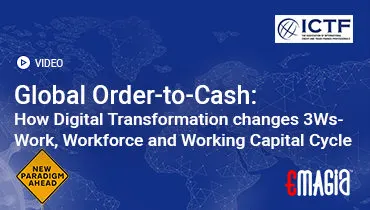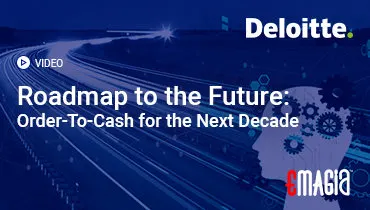1. Introduction to e-Invoicing Management
As businesses shift toward digital transformation, e-Invoicing Management has emerged as a critical tool for modern financial operations. It eliminates manual errors, speeds up processing, ensures tax compliance, and saves both time and money across the invoicing cycle.
2. What Is e-Invoicing Management?
2.1 Definition of e-Invoicing Management
e-Invoicing Management refers to the comprehensive process of issuing, sending, validating, receiving, storing, and auditing invoices using a standardized electronic format that facilitates automation and compliance.
2.2 Key Components of e-Invoicing Management
- Electronic data capture and invoice generation
- Secure invoice transmission over approved channels
- Compliance validation and tax authority reporting
- Automated approval workflows
- Invoice archiving with audit trails
3. Why e-Invoicing Management Matters
3.1 Cost Reduction & Efficiency
By automating invoice workflows, businesses can cut costs by as much as 80%, while also minimizing errors and speeding up processing times.
3.2 Compliance & Fraud Prevention
e-Invoicing ensures real-time tax reporting and reduces the risks of tax fraud and non-compliance, especially under mandates from global governments.
3.3 Enhanced Supplier Relations & Cash Flow
Faster invoice approvals lead to timely payments, improving supplier trust and maintaining a healthy cash flow.
3.4 Sustainability & Environmental Impact
Digital invoicing reduces reliance on paper, contributing to sustainability goals and lowering the carbon footprint.
4. Types & Standards in e-Invoicing Management
4.1 Unstructured, Structured & Hybrid e-Invoices
e-Invoices come in various formats—structured (like XML), unstructured (PDF), and hybrid. Structured formats offer full automation and compliance.
4.2 Common Data Formats & Standards
- EDI formats: ANSI X12, EDIFACT
- XML-based standards: UBL, CII
4.3 Regional Mandates & Frameworks
e-Invoicing is mandated in many countries such as Italy, Brazil, India, and parts of the EU through frameworks like PEPPOL and ViDA.
5. How e-Invoicing Management Works
5.1 Invoice Creation & Data Capture
Invoices are generated directly from ERP systems or extracted using OCR and other intelligent automation tools.
5.2 Transmission Channels
Invoices are securely sent over EDI, PEPPOL networks, or government portals for validation.
5.3 Compliance Validation & Approval
Automated systems validate each invoice against compliance rules before routing it for approvals.
5.4 Receipt Processing & AP Automation
Received invoices are matched with purchase orders and receipts for automated processing.
5.5 Archiving & Audit-Ready Storage
Invoices are stored digitally in compliant, searchable archives for future audits.
5.6 Reporting to Authorities
Invoice information is submitted promptly—often in real-time—to tax authorities, depending on the legal requirements of each country.
6. Benefits of Robust e-Invoicing Management
- Faster invoice cycles and fewer errors
- Improved cash flow and discount optimization
- Automated compliance and reduced fraud
- Environmental sustainability and digital scalability
7. Implementing e-Invoicing Management: A Step-by-Step Guide
- Assess your current invoicing process
- Define business and compliance requirements
- Select the right e-Invoicing solution
- Choose a certified network provider
- Run a pilot with select suppliers
- Easily integrate with existing ERP and accounts payable platforms to enhance operational efficiency
- Roll out organization-wide with supplier onboarding
- Monitor KPIs and optimize continuously
8. Emerging Trends & The Future of e-Invoicing Management
- Blockchain for invoice traceability
- AI and RPA for validation and compliance
- Real-time tax reporting frameworks (e.g., ViDA)
- Cross-border interoperability via global standards
- Integration with e-payments and digital finance ecosystems
9. Challenges & Best Practices
9.1 Common Challenges
Organizations may face supplier resistance, integration hurdles, or regulatory confusion during adoption.
9.2 Mitigation Strategies
Address these by providing training, phased rollouts, and selecting adaptable solutions.
9.3 Best Practices
- Maintain strong governance and change management
- Engage suppliers early and frequently
- Track performance through KPIs
10. Case Studies & Real-World ROI Examples
- Following the implementation of mandatory e-invoicing, Italy experienced a significant drop—around 90%—in tax evasion activities
- Mexico improved VAT collection with CFDI
- India’s phased rollout resulted in faster B2B processing
- Global MNCs reduced invoice cycle time by 60%
11. Empowering Your Business with Emagia’s e-Invoicing Platform
11.1 Intelligent Invoice Processing
Emagia uses AI-driven automation to handle invoice creation, validation, and routing across global networks.
11.2 Compliance-Centric Design
Supports multi-country mandates, including PEPPOL, ViDA, and India’s e-invoicing regulations.
11.3 Deep Integration & Analytics
Works seamlessly with ERPs, providing real-time dashboards and supplier portals.
11.4 Driving ROI and Efficiency
Reduces cost-per-invoice, accelerates approval cycles, and improves working capital management.
Frequently Asked Questions
What is e-Invoicing Management and how does it work?
It involves creating, transmitting, validating, and storing electronic invoices in structured formats for automation and compliance.
Is e-Invoicing mandatory?
Yes, in many countries like Italy, India, Brazil, and parts of the EU. Mandates are expanding globally.
How does e-Invoicing differ from traditional invoicing?
Traditional methods are manual and unstructured (paper or PDF), whereas e-Invoicing uses structured digital formats for automation.
What standards are used in e-Invoicing?
Common formats include XML (UBL), EDIFACT, and PEPPOL frameworks.
What are the benefits of e-Invoicing Management?
Benefits include cost savings, faster payments, improved accuracy, and regulatory compliance.
How do I implement e-Invoicing Management in my organization?
Assess needs, choose a provider, pilot test, integrate systems, and onboard suppliers in phases.
What are challenges in e-Invoicing adoption?
Challenges include supplier resistance, technical integrations, and staying compliant with evolving mandates.
How will e-Invoicing evolve in the future?
Expect AI-powered processing, blockchain integration, and global standardization for seamless interoperability.



